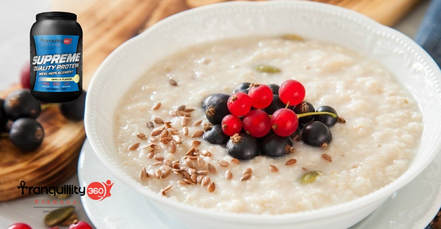 With changes in the aging spine, occasional backaches may grow more frequent and blossom into a chronic and disabling pain condition. It doesn't have to happen to you. To maintain the best back health possible, you must address both the body and the mind. Cardiovascular and strength training are good basic prevention to keep your back healthy, Because of the brain's involvement with back pain, maintaining a good sleep cycle and good emotional state are also very important." 1 Don't baby your back It's important to respond to back pain constructively. Acute back pain flare-ups are so painful that most people start to baby their backs. If people tend to shrink too much from their daily activity level, they get deconditioned. In turn, deconditioning can lead to worse pain and disability. "Neurological changes happen that sensitize you to the pain. That feeds into a cycle of more avoidance of activity and more deconditioning. When you have a sore back, avoid extended bed rest. Slowly transition back to your usual activities. "It's important to maintain normalcy. Get up and walk around the house. Try to do light tasks. Maintain moderate activity." 2 Strengthen your core Strengthen the muscles that support the lower spine as an insurance policy. "Moderate exercise is very helpful. Many people who are moderate exercisers have fewer musculoskeletal problems. Ask your doctor to suggest daily back exercises appropriate to your condition or ask for a referral to a physical therapist to teach you the most effective exercises to prevent back pain. 3 Stay limber If the muscles that support the lower spine become tight, it can make pain worse. Trouble generally develops in the muscles and ligaments of the pelvic girdle, which allow you to bend and twist at the waist. "When the hip girdle is unbalanced, you have more flare-ups of back pain. Learn some stretches to keep your pelvic girdle limber. Some of the same exercises often recommended for routine back pain will help, but a physical therapist can carefully assess your specific musculoskeletal issues and prescribe stretches to release the tension. 4 Straighten up Poor posture can put stress on the back and trigger back pain. Don't slouch when you sit. If you are slouching or leaning because of ongoing pain, loosening the hip girdle with stretching exercises may help. "That allows you to stand more upright and put less mechanical strain on the low back. 5 Get some sleep Getting restful sleep is essential for anyone with back problems because sleep deprivation sensitizes you to pain. When you have poor sleep, it also alters brain chemistry and you are more prone to developing a chronic pain state. 6 Stay positive and relax People who are depressed and anxious tend to have worse back problems. And of course, back pain itself can get you down. Like sleep deprivation, blue moods and anxiety can make you more sensitive to pain. Relaxing deep-breathing exercises can help to relieve the stress of a back-pain flare-up. If you are getting depressed, anxious, or hopeless about your condition, ask for more help from your doctor. Think of the flare-up as a temporary setback and focus on what you will be able to do in the future to make back pain a less frequent companion in your life. Tips: Exercise is still one of the best method to heal back pain, when done correctly; and with the right guidance.
0 Comments
 Even though the temperature has dropped, this doesn't mean you have to bring your workouts indoors. “When it gets into the below 2 and -0, you can still enjoy your regular outside routines, like walking, running, and even cycling," Cold comfort In some ways, winter can offer benefits you don't get in summer. For instance, cold weather may improve endurance, says "In colder temperatures your heart doesn't have to work as hard, you sweat less, and expend less energy, all of which means you can exercise more efficiently." Studies also have shown that exercising in cold weather can transform white fat, specifically belly and thigh fat, into calorie-burning brown fat. Plus, winter workouts help you get exposure to sunlight, which may help ward off seasonal affective disorder, a type of depression that some people experience during the winter months. While cold-weather exercise is safe for most people, if you have certain conditions, such as asthma or heart problems, check with your doctor to review any special precautions you need to take based on your condition or medications. Warming up to the cold Cold muscles are at a greater risk for strains and injuries, so make sure to warm up before your cold-weather workout. "You want to avoid starting with static stretches, that is, not moving the body part while stretching, which can further increase your risk for injury. "More dynamic forms of stretching that keep body parts moving can loosen your joints, get your blood flowing, and warm up muscles and tissues." Here is a pre-exercise routine you can try: Arm circles: Hold your arms out to the sides, palms down, at shoulder height. Begin making small circles and gradually make them larger until you complete 20 circles. Then go from large to small circles until you complete another 20. Arm swings: Stand with your feet shoulder-width apart and swing your arms in unison to the right and then to the left, twisting from the waist. Go back and forth until you complete 10 swings total (five toward each side). High steps: Stand with your feet shoulder-width apart. Raise your right knee high toward your chest (touch a wall for balance or place one or both hands around your knee, if needed). Hold for a second, then return to the starting position. Repeat the movement with your left knee. Go back and forth until you've lifted each knee five to 10 times. Lunges: Stand with your feet together and step forward with your right leg, lowering your body by bending both knees to 90° angles. Return to the starting position and repeat the movement with your left leg forward. Repeat the sequence five to 10 times. Get outside You must respect colder weather and make sure you're properly prepared, just as you would with summer heat and humidity. Here are some tips to stay safe and healthy while you enjoy your cold-weather workouts. Wear layers. Dress in clothing that you can easily take off and put back on as needed. Start with a thin layer of synthetic material, such as polypropylene, which draws sweat away from your body. Next, add a layer of fleece or wool for insulation. (Always avoid cotton, which absorbs sweat and can make you colder.) Top this with a waterproof, breathable outer layer. "You may need to experiment to find the right combination of clothing based on your exercise intensity and comfort level,". Protect your head, hands, and feet. When it's cold, blood flow concentrates in your body's core to help keep you warm, which leaves your head, hands, and feet vulnerable to the cold. Wear gloves lined with wool or fleece or add a thin pair of glove liners made of a wicking material under a pair of heavier gloves. Also, wear heavy socks and a wool cap, and protect your eyes from wind and glare with dark glasses. Apply sunscreen. It may not feel hot, but you can still get sunburned in winter. Your risk increases if you are surrounded by snow, which can reflect sunlight. Always wear a product that blocks both types of ultraviolet rays — UVA and UVB — with at least 30 SPF, and a lip balm with sunscreen. Stay hydrated. You are more likely to get dehydrated in cold weather because cold air tamps down thirst. While you may not need the same fluid intake as during summer, you still need to maintain the same approach to hydration. "Drink water before, during, and after your workout and pay attention to being thirsty," If you need help, set a timer on your phone or fitness tracker to remind you to drink. Choose a safe surface. Make sure your route offers good footing and is clear and safe to navigate. Wear shoes with good traction and invest in walking poles for support and to help avoid slips and falls. "Always remember to monitor how your body feels during cold-weather exercise," Tips: Exercising in cold weather increases the risk of hypothermia (abnormally low body temperature). Seek emergency care right away if you develop symptoms such as intense shivering, extreme fatigue, slurred speech, or loss of coordination. Always let someone know when you are going outdoors and carry a fully charged cellphone.  A high-protein breakfast may help curb your appetite later in the day, suggests a major study in the October 2018 Journal of Dairy Science. Researchers assigned over 400 healthy adults to eat a breakfast containing two servings of a high-carbohydrate cereal, with either 1 cup of commercial milk that contained 12.4 grams of protein, or 1 cup of milk mixed with a whole-milk protein concentrate or a whey protein powder that boosted protein intake to 28 grams. The participants then had their blood sugar levels measured. After two to three hours, the participants ate a high-carb lunch and had their blood sugar checked again. Later, everyone's appetite was assessed with a questionnaire. The researchers found that people who consumed extra protein at breakfast had lower blood sugar levels and reduced appetite later in the day compared with those consuming less protein. Protein takes longer to digest than carbohydrates do, which explains why it can suppress appetite, but the study also suggests that the more protein you consume, the longer the effect may last. This could be helpful for people who fight afternoon cravings or who need help to lose and manage their weight. Although this study used milk and whey protein powder, the researchers added that it's conceivable that any protein source would work as well. Here is a simple way to add more protein to your diet at breakfast within minutes, , while you still pack in some good fibre, carbs and other important nutrients to keep you going throughout the day. Protein Porridge in minutes · ½ cup porridge oats · 1 full scoop of Tranquillity 360 fitness meal replacement protein powder · 1 cup water · ¼ tsp cinnamon powder Method bring water to the boil the add porridge oats, cook for three minutes Whisky in cinnamon powder and protein powder. Pour in a bowl and off you go, healthy breakfast packed with nutrients. Tips: You can also used Weetabix for the same results, as you would get from porridge oats or even spice it up with a bit of Nutella and dried or fresh fruits |
AuthorsThis blog is updated by Tranquillity 360 fitness personal trainers, as well as other guest bloggers. Archives
July 2021
Categories |

 RSS Feed
RSS Feed